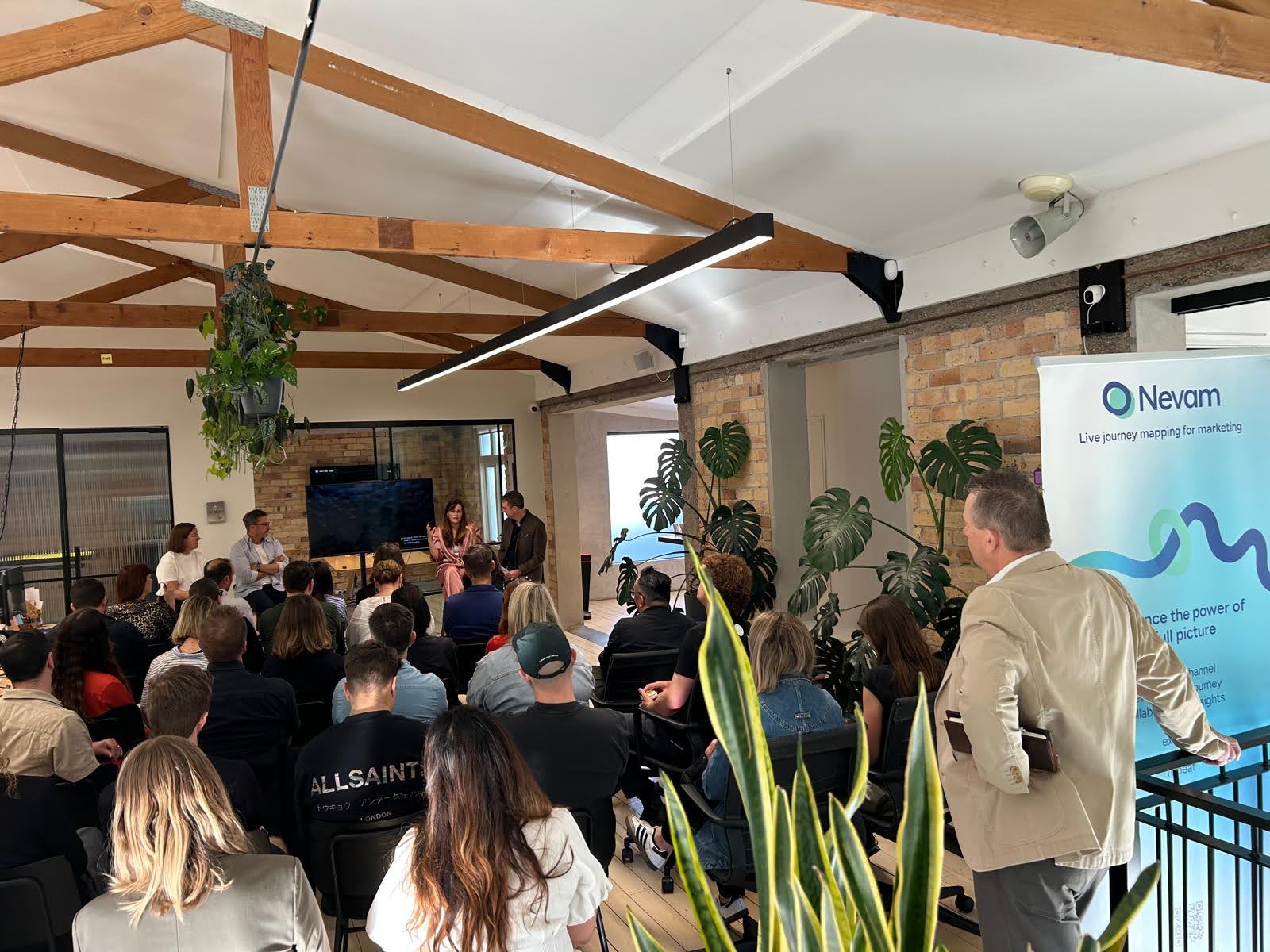The customer experience (CX) space is full of journey maps, dashboards, and strategic decks, but most teams are still flying blind when it comes to real execution.
AI is reshaping how customers discover, evaluate, and purchase products, and marketers are facing an entirely new reality: a dual-audience world where your next customer might not even be human.
On November 6, 2025; Carl Sarney, an independent brand strategist and facilitator, led a rich discussion hosted at Previously Unavailable, featuring Meredyth from Digitas, Ahmad from Deloitte Digital, and Brittany Fox, founder of Nevam, the CX digital twin for marketing visibility.
The session unpacked the question:
How do we design brand and customer experiences for both humans and AI agents?
Below are the key takeaways.
The Next Customer in Your Queue Might Be an AI
Carl Sarney opened with a thought-provoking challenge: What if the next “customer” your brand serves isn’t a human at all?
AI agents are beginning to curate, compare, and even purchase on behalf of humans. This means marketers must design experiences that serve both human and non-human audiences — ensuring brands are visible, trusted, and interpretable to large language models (LLMs) as much as they are appealing to human emotions.
1. Content Needs to Speak Both Human and Machine
As Meredyth from Digitas explained, marketers are moving beyond the “AI hype” into pragmatic experimentation. Brands now need to create content that can be consumed by humans and AI agents alike across the entire funnel — from awareness to conversion.
The rise of AI-driven search means that content richness and accessibility are the new SEO. Instead of short, keyword-focused pages, brands should be optimizing for AI comprehension:
- Use structured, detailed copy that clearly explains context, benefits, and use cases.
- Include PDFs and long-form content, which LLMs parse more effectively than HTML.
- Create “agent-friendly” versions of websites — much like Stripe, which now maintains distinct content pathways for humans and AI crawlers.
2. Test with synthetic experiences to de-risk CX
Brittany Fox of Nevam challenged the traditional “set it live and wait” model of digital CX. Instead, she proposed proactive experience testing using AI agents — synthetic customer experience that stress tests before launch to identify friction points.
Just as developers test in staging environments, marketers can:
- Simulate customer journeys using AI personas.
- Identify conversion barriers before campaigns go live.
- Validate if content is discoverable and meaningful to both humans and AI.
This approach could help organizations move faster and de-risk CX decisions — turning AI from a post-launch analytics tool into a pre-launch design partner.
3. Trust and Consistency Are the New Brand Moats
According to Ahmad from Deloitte Digital, the biggest challenge for brands isn’t technological — it’s philosophical.
Brands must ask: How will we show up in a world mediated by AI?
LLMs don’t just index information; they evaluate sentiment, reputation, and consistency. A brand that only communicates its essence through advertising will lose out to one that embodies its brand idea across every touchpoint — from customer service to product design.
Ahmad emphasized:
“Your customer doesn’t care how your company is structured. They experience one brand. If your experience is fragmented, AI will pick that up.”
That means aligning CX, brand, and data strategy into one unified story — not just for customers, but for the algorithms interpreting your brand every second.
4. Be present where LLM’s learn
The group agreed that AI discoverability depends on being present where LLMs learn — across owned and unowned channels:
- Build credible profiles on Wikipedia, Reddit, and other social knowledge platforms.
- Prioritize verified, review-based content to enhance trust signals.
- Ensure consistent brand language and emotionally resonant themes that reinforce brand identity across the web.
As Carl Sarney noted, brand consistency has never mattered more:
“If your brand has been saying the same thing for years, AI will notice — and reward it.”
5. The Overhyped and the Actionable
The panel closed by distinguishing what’s hype from what’s real:
- Overhyped: The myth that AI will instantly slash content costs in half.
- Actionable: Building AI search into your digital platforms and auditing your content for depth, trust, and clarity — today.
As Ahmad cautioned, AI won’t magically make marketing cheaper overnight. Instead, brands that invest in disciplined, content-rich ecosystems now will dominate future AI-driven recommendation engines.
Final Thoughts
The AI-enabled marketing era isn’t on the horizon — it’s already here. The winners will be those who:
- Understand both human and AI audiences.
- Build trust through consistent, transparent storytelling.
- Build proactive optimisation and content governance by getting their house in order.
Nevam’s mission is to help brands see and fix the leaks in their marketing bucket — human or AI.
As we step into this new reality, one thing is clear: the future of marketing is no longer just human-centered — it’s intelligence-centered.
Latest insights from our articles
Explore a collection of curated articles that keep you engaged and informed about the latest trends in social media marketing.


Customer experience (CX) used to be about satisfaction scores, journey maps, and service surveys. But today’s enterprise environments, with distributed teams, AI agents, and an explosion of digital touchpoints, require something more dynamic: CX that actually works.



.png)